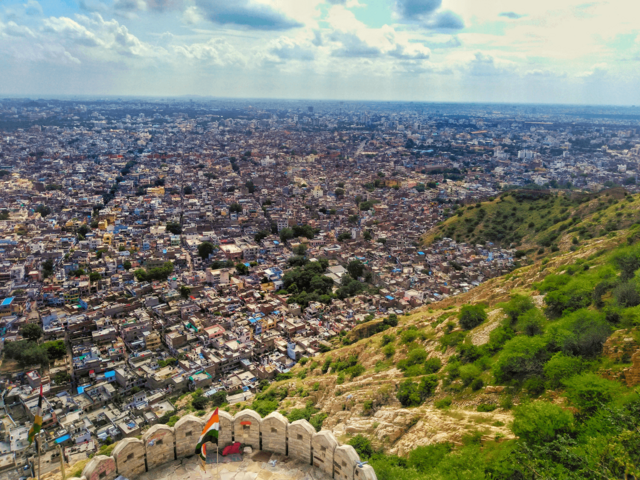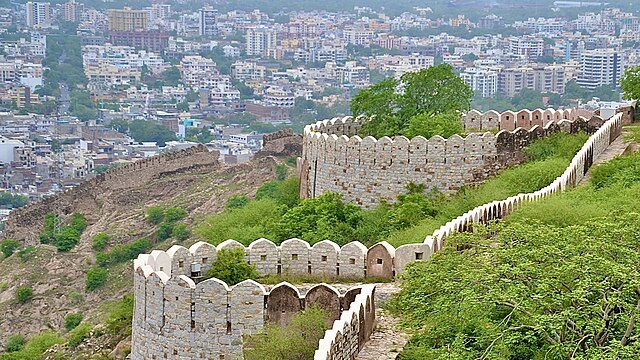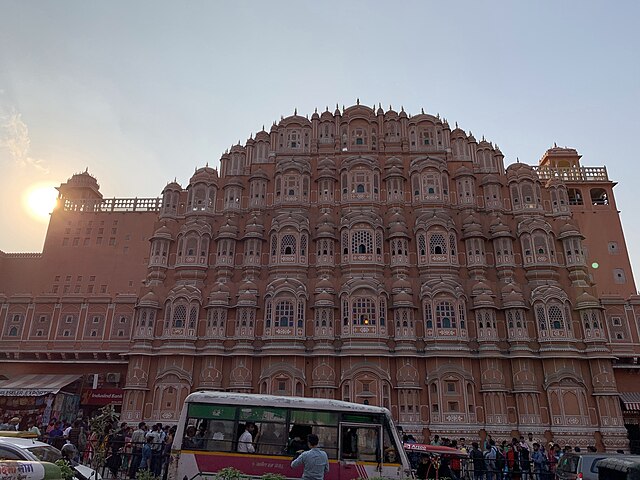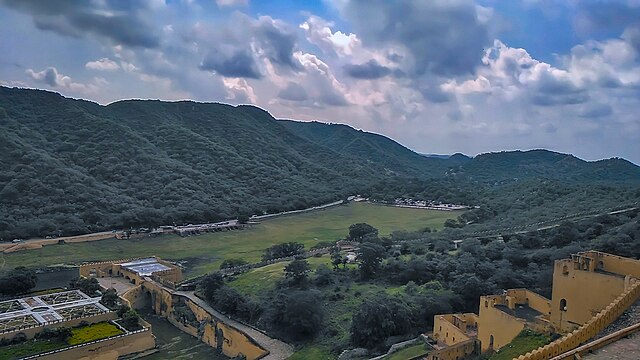Jaipur, the vibrant capital of Rajasthan, is as famous for its rich history and colorful culture as it is for its dramatic weather. Have you ever wondered what it’s like to experience the Pink City’s climate? From scorching summers to chilly winters and the refreshing monsoon, Jaipur’s weather is a rollercoaster that keeps locals and tourists on their toes. In this guide, we’ll dive deep into what makes Jaipur’s climate unique, offering insights, tips, and a sprinkle of local flavor to help you navigate this desert city’s seasons. Whether you’re planning a visit or settling down as a resident, understanding Jaipur’s weather is key to making the most of your time here.
Why Jaipur’s Weather Feels Like a Desert Drama
Picture this: one day you’re sweating buckets under a blazing sun, and a few months later, you’re wrapping yourself in a shawl, sipping chai to stay warm. That’s Jaipur’s weather for you—a dynamic mix of extremes that mirrors the city’s bold and colorful personality. Nestled in the semi-arid region of Rajasthan, Jaipur experiences a desert climate with distinct seasons, each bringing its own charm and challenges. The city’s weather is shaped by its geography, with the Aravalli hills influencing rainfall and temperature patterns. Curious about what each season has in store? Let’s break it down.
Summer in Jaipur: A Fiery Affair
Summer in Jaipur, typically from March to June, is like stepping into an oven. Temperatures often soar above 40°C (104°F), with May and June being the hottest months. Posts on X have reported daytime highs reaching up to 47°C in places like Ganganagar and 42.8°C in Jaipur itself on May 21, 2025. The heat is relentless, and the dry desert air makes it feel even more intense. Locals often joke that you could cook a paratha on the pavement! Despite the scorching days, evenings can bring a slight reprieve, with temperatures dropping to the mid-20s (°C). If you’re visiting during summer, hydration is your best friend—carry a water bottle and stick to light, breathable fabrics like cotton.
Surviving the Summer Heat: Tips for Travelers
Navigating Jaipur’s summer heat requires a game plan. Start your day early to explore landmarks like Amber Fort or Hawa Mahal before the sun peaks. Wear loose, light-colored clothing and a wide-brimmed hat to shield yourself from the sun’s rays. Locals swear by traditional drinks like lassi or aam panna to beat the heat. Indoor attractions, such as the City Palace or Albert Hall Museum, offer a cool escape during the afternoon. And don’t forget sunscreen—your skin will thank you!
Monsoon Magic: When Jaipur Gets a Refreshing Break

Come July, the monsoon arrives like a long-awaited guest, transforming Jaipur’s arid landscape into a lush, green canvas. From July to September, the city receives most of its annual rainfall, averaging around 600-700 mm. Recent updates on X mention scattered rains and dust storms in Jaipur and nearby areas like Sikar and Dausa in mid-June 2025. The monsoon brings relief from the summer heat, but it also introduces humidity and occasional heavy downpours. The sight of raindrops glistening on the pink sandstone of Jaipur’s architecture is nothing short of poetic.
What to Expect During the Monsoon
Monsoon in Jaipur is a mixed bag. While the rains cool things down, they can also lead to waterlogging in low-lying areas. If you’re planning to explore, carry an umbrella or raincoat and opt for sturdy footwear. The city’s forts and palaces take on a mystical vibe during the rains, making it a great time for photography enthusiasts. However, be prepared for sudden showers that might disrupt your plans. Locals often head to rooftop cafes to enjoy the rain with a cup of masala chai—why not join them?
Winter Wonders: Jaipur’s Cozy Season
Winter, from November to February, is Jaipur’s golden season. Temperatures range from 5°C to 25°C, making it the perfect time to explore the city’s bustling markets and historic sites. The cool, crisp air is a welcome change from the summer’s intensity, and the city comes alive with festivals like Diwali and the Jaipur Literature Festival. Nights can get chilly, especially in December and January, so packing a light jacket or shawl is a smart move. Ever wondered what it’s like to stroll through Johari Bazaar under a starry winter sky? It’s pure magic.
Winter Activities to Embrace in Jaipur
Winter is the ideal season for outdoor adventures in Jaipur. Take a hot air balloon ride over the city for a bird’s-eye view of its forts and palaces. Visit Nahargarh Fort at sunset for breathtaking views and a cozy vibe. The winter months also bring vibrant festivals, so don’t miss the chance to experience local culture at events like the Pushkar Camel Fair or Kite Festival. Warm up with spicy Rajasthani dishes like laal maas or ghevar to make your winter experience even more delightful.
The Role of Geography in Shaping Jaipur’s Weather
Jaipur’s weather isn’t just a random act of nature—it’s deeply tied to its location. The city sits in a semi-arid zone, flanked by the Aravalli hills, which act as a barrier, reducing rainfall compared to coastal regions. This geography creates a unique microclimate where summers are dry and winters are mild. The Thar Desert’s influence keeps humidity low for most of the year, except during the monsoon. Understanding this helps explain why Jaipur’s weather can feel like a whirlwind of contrasts!
How the Aravalli Hills Influence Rainfall
The Aravalli hills play a starring role in Jaipur’s weather story. These ancient mountains block some of the monsoon winds, resulting in moderate rainfall compared to other parts of India. While this keeps Jaipur from turning into a tropical rainforest, it also means the city relies heavily on the monsoon for water. When the rains are delayed or scanty, drought-like conditions can emerge, affecting agriculture and water supply. It’s like nature’s way of keeping Jaipur on its toes!
Seasonal Festivals and Weather: A Perfect Pair
Jaipur’s weather and culture are intertwined like threads in a Rajasthani tapestry. Each season brings festivals that align perfectly with the climate. Summer’s heat doesn’t dampen the spirit of Gangaur, where locals pray for prosperity. Monsoon welcomes Teej, a celebration of love and rain, with women in vibrant sarees swinging under the cloudy skies. Winter’s mild weather sets the stage for the Jaipur Literature Festival, drawing book lovers from across the globe. How cool is it that the weather adds its own flavor to these festivities?
Planning Your Visit Around Festivals
Timing your visit to Jaipur with its festivals can elevate your experience. If you’re a culture buff, plan for Teej in August to witness the monsoon’s festive side. Literature enthusiasts should aim for January’s Jaipur Literature Festival, when the weather is perfect for outdoor events. Just be sure to book accommodations early, as these festivals draw huge crowds. Pro tip: pack for the season—light cottons for monsoon and warm layers for winter.
Climate Change and Jaipur’s Weather Patterns

Let’s talk about the elephant in the room: climate change. Jaipur’s weather is feeling the heat (pun intended) of global shifts. Recent years have seen hotter summers, with temperatures creeping higher than usual. Posts on X reported temperatures soaring past 46°C in Kota and above 43°C in Jaipur in June 2025, with a red alert issued for heatwaves. Monsoons are becoming less predictable, with delayed starts or intense bursts of rain. Winters, while still pleasant, are occasionally warmer than expected. These changes are a wake-up call for sustainable living in the Pink City.
How Locals Are Adapting to Changing Weather
Jaipurites are nothing if not resilient. Locals are adapting to erratic weather by embracing water conservation techniques, like rainwater harvesting, to combat drought risks. Solar energy is gaining traction to reduce reliance on traditional power during scorching summers. As a visitor, you can do your part by supporting eco-friendly businesses and minimizing water waste. Ever thought about how small actions, like carrying a reusable water bottle, can make a big difference?
Packing for Jaipur: A Weather-Based Guide
Packing for Jaipur is like preparing for a weather adventure. Summer calls for lightweight, breathable clothes and plenty of sunscreen. Monsoon demands waterproof gear and quick-drying shoes to tackle sudden showers. Winter is all about layering—think scarves, light sweaters, and comfortable walking shoes for exploring. No matter the season, a reusable water bottle and a hat are must-haves. Ready to pack smart and travel light?
Seasonal Packing Checklist
Here’s a quick checklist to keep you prepared:
- Summer: Cotton kurtas, sunglasses, sunscreen, and a water bottle.
- Monsoon: Umbrella, raincoat, waterproof backpack, and non-slip shoes.
- Winter: Light jacket, shawl, comfortable sneakers, and moisturizer for dry skin.
This list will keep you comfortable while you soak in Jaipur’s charm, no matter the weather.
Weather’s Impact on Jaipur’s Tourism Industry
Jaipur’s weather plays a starring role in its tourism scene. Winter is peak season, with mild temperatures drawing crowds to landmarks like Amber Fort and Jantar Mantar. Monsoon attracts those seeking a quieter, greener Jaipur, though rain can complicate travel plans. Summer sees fewer tourists, but it’s a great time for budget travelers, as hotels often slash rates. The weather shapes not just your experience but also the city’s economy—pretty powerful for something we often take for granted, right?
Best Time to Visit Jaipur
If you’re wondering when to visit, winter (November to February) is hands-down the best time. The cool weather makes sightseeing a breeze, and festivals add a cultural spark. That said, if you love lush greenery and don’t mind a bit of rain, monsoon (July to September) offers a unique perspective. Summer is best for those who can handle the heat and want to explore with fewer crowds. What’s your travel vibe—chasing festivals or dodging the tourist rush?
Local Weather Lore and Traditions
Jaipur’s weather isn’t just about temperatures—it’s woven into the city’s folklore. Locals often share tales of how the rains signal prosperity or how a harsh summer tests resilience. Traditional practices, like offering prayers during Teej for a bountiful monsoon, reflect the deep connection between weather and culture. Chatting with a local vendor at Bapu Bazaar about the weather might just lead to a fascinating story or two!
How to Stay Updated on Jaipur’s Weather

Keeping tabs on Jaipur’s weather is easier than ever. Apps like AccuWeather or the India Meteorological Department’s (IMD) website provide reliable forecasts. For real-time updates, follow local weather accounts on X, like @IMDJaipur or @Rajsthanweather, which share timely posts about heatwaves, rainfall, and more. Pro tip: check the forecast a few days before your trip to pack accordingly and plan your itinerary.
Conclusion: Embracing Jaipur’s Weather
Jaipur’s weather is as vibrant and varied as the city itself. From the fiery summers to the refreshing monsoons and cozy winters, each season paints the Pink City in a different hue. By understanding the climate and planning accordingly, you can make the most of your time here, whether you’re exploring historic forts, savoring spicy Rajasthani cuisine, or soaking in the festive vibe. So, grab your sunglasses, umbrella, or shawl—whatever the season calls for—and dive into the adventure that is Jaipur. What’s stopping you from experiencing this desert gem’s weather firsthand?
Frequently Asked Questions
1. What is the best time to visit Jaipur for pleasant weather?
Winter (November to February) offers the most comfortable weather, with temperatures between 5°C and 25°C, perfect for sightseeing and outdoor activities.
2. Does Jaipur experience extreme weather conditions?
Yes, summers can be extremely hot, with temperatures exceeding 40°C, and monsoons bring heavy rains and humidity. Winters are milder but can get chilly at night.
3. How should I prepare for Jaipur’s monsoon season?
Carry a raincoat, umbrella, and waterproof shoes. Plan indoor activities for heavy rain days and check for waterlogging updates in the city.
4. Are there any weather-related festivals in Jaipur?
Absolutely! Teej in the monsoon celebrates rain and love, while winter hosts the Jaipur Literature Festival and Diwali, blending culture with the season’s vibe.
5. How can I stay safe during Jaipur’s summer heat?
Stay hydrated, wear light clothing, use sunscreen, and avoid outdoor activities during peak afternoon hours. Opt for early morning or evening outings.

